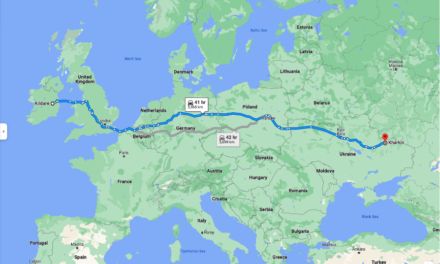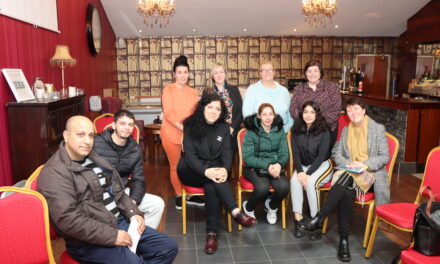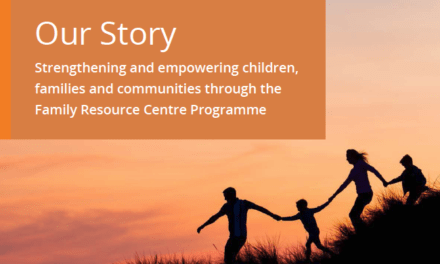New Zealand is renowned for its beautiful natural landscapes, its blockbuster output and its sporting prowess. What it’s less well known for is its major issue with family violence. Researcher and family violence prevention practitioner Cristy Trewartha discusses here one of the approaches designed to make a difference.
Imagine if 40% of Ireland’s police work was responding to family violence. In New Zealand, that’s precisely what we’re facing.
Due to the high rates of family violence that exist in the country, and the complexity and intergenerational nature of it, it is unlikely that responding solely after violence has already occurred is enough to change anything. We must look elsewhere for a solution.
We cannot service our way out of this problem. We must also focus on prevention and on creating new social norms. Since 2002, there has been an increased emphasis on prevention in New Zealand, which has led to greater public awareness, attitude change and more people seeking help than before. However, our response and prevention efforts have not yet reduced rates of violence.
In the search for effective approaches to preventing family violence, work within communities has gained momentum since the mid-2000s. This has included fostering relationships between those working in the family violence and community development sectors. Here, the voice of community members is more important than ever.
While early responses to family violence started within the community-based feminist movement, over time New Zealand followed global trends and moved away from collective approaches to become more individualised and service oriented.
Now, there is a growing movement back towards collective approaches, and new evidence suggests that community mobilisation (CM) — a specific community development strategy — is an effective approach to addressing family violence.
CM is a transformative approach used to create social change on complex issues. It is long-term and multifaceted, and engages large numbers of community members in local action for change.
Promoting healthy relationships to prevent violence
In one community, the desire to focus on prevention and long-term change led to the development of a CM initiative called the HEART Movement.
The Tāmaki community (pop. 12,000) in Auckland had experienced high rates of family violence for decades and, in 2008, practitioners and community leaders committed to addressing the problem.
The community wanted an approach that was inclusive and would build the capacity of local residents. They wanted to work towards a positive goal by not only preventing family violence, but by promoting healthy relationships.
HEART is evidence-informed and uses local insight and research to guide development. The first step was to conduct a community readiness assessment to see how prepared the community was to make change. This assessment informed the development of a theory of change to guide action. HEART has two action strands: (a) community mobilisation and (b) building organisational capacity and collaborative development.
CM work is driven by people who are change agents. They are local leaders living and working in the area who commit to building awareness and challenging the status quo. They support each other to take action to change unhealthy social norms and behaviours, and build healthy relationships in their homes and communities.
They share their knowledge and skills through their social networks and host courageous conversations. While they are supported by an organisation called Te Waipuna Puawai (part of the Sisters of Mercy), the change agents are the engine room of the CM approach. They are involved in all aspects of HEART, including leadership development, art, music, theatre, events, conversation spaces, training, research and planning.
Training is the key focus of capacity development work. It is provided to local practitioners and community members for free. Each year the HEART network of 350 people is surveyed for their training needs. The high-quality training has been successful in giving people the skills and information they want and need.
HEART uses a community mobilisation questionnaire to track change over time. The first assessment was completed in 2016 and looked at key elements in community mobilisation, such as leadership, participation levels and shared concerns.
Ongoing assessments will assess change every three years or so. Community readiness assessments in 2011, 2014 and 2016 show that readiness to prevent family violence and promote healthy relationships is increasing.
The results are very much visible, with one participant saying, “They’re building capacity in the local people and community. That’s creating a sense of worth. Local people are actually finding or using knowledge that they didn’t know they had. That gives them a sense of pride, and then they become a role model.”
For more information on HEART and on CM in New Zealand, see Hann and Trewartha’s 2015 paper, ‘Creating change: Mobilising New Zealand communities to prevent family violence’.
Learn about HEART’s Theory of Change by contacting programme lead Nandita Mathur at heart@twp.org.nz.
Cristy Trewartha is a family violence prevention practitioner and researcher currently completing a doctorate on measuring community mobilisation to prevent family violence. She worked on HEART for three years before handing over to focus on finishing her PhD.
Interested in reading more about the state of Ireland’s community development sector? Check out our latest issue.




